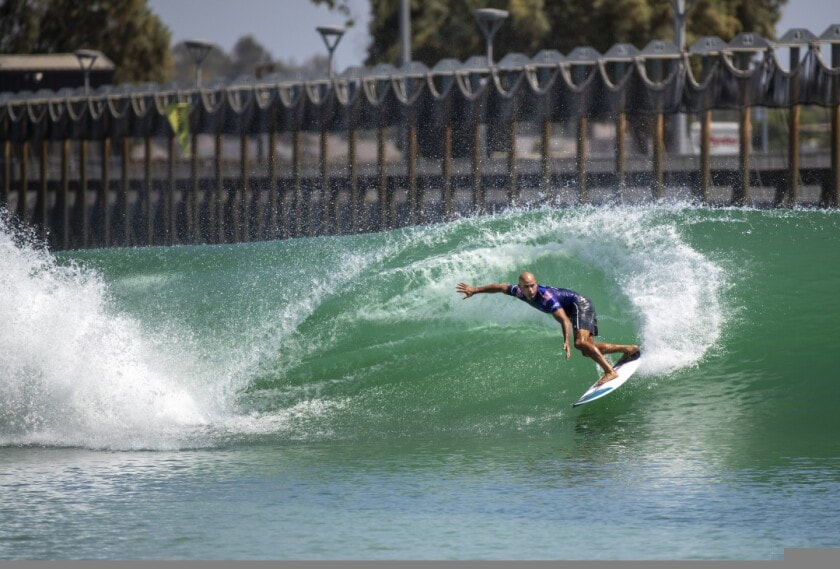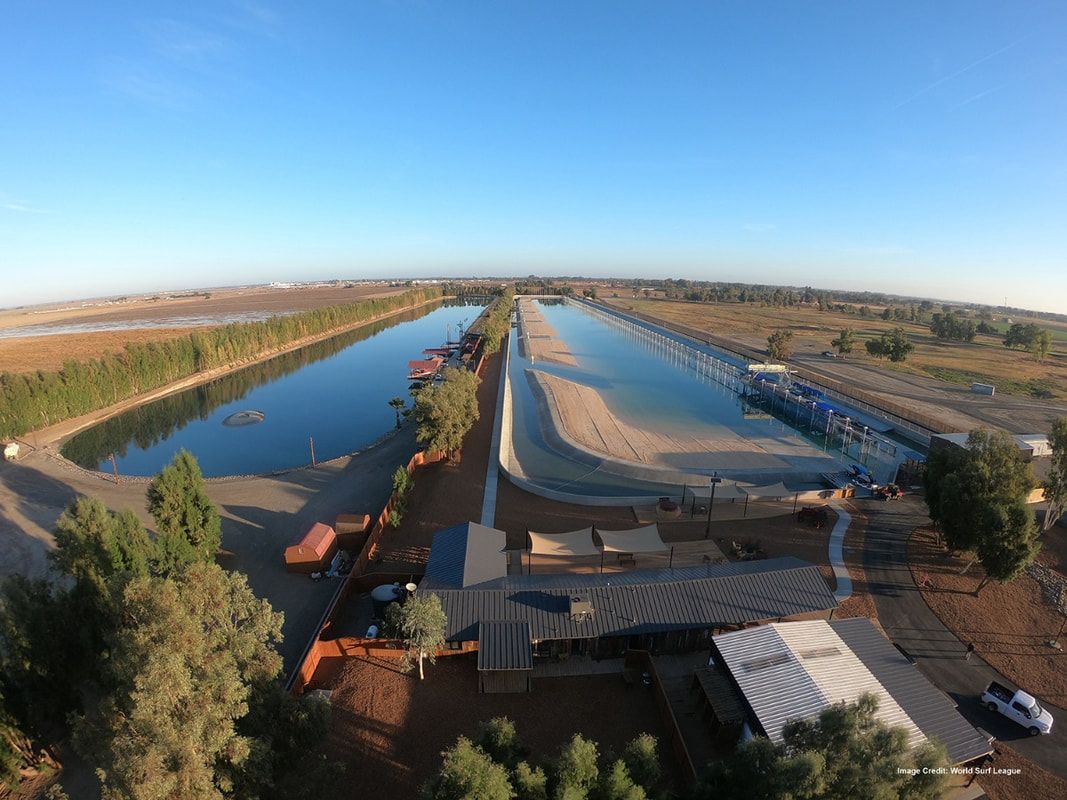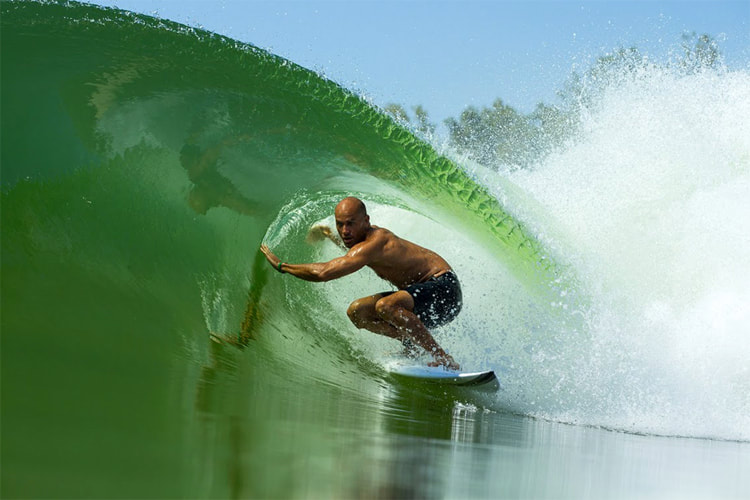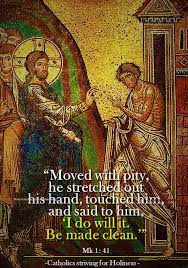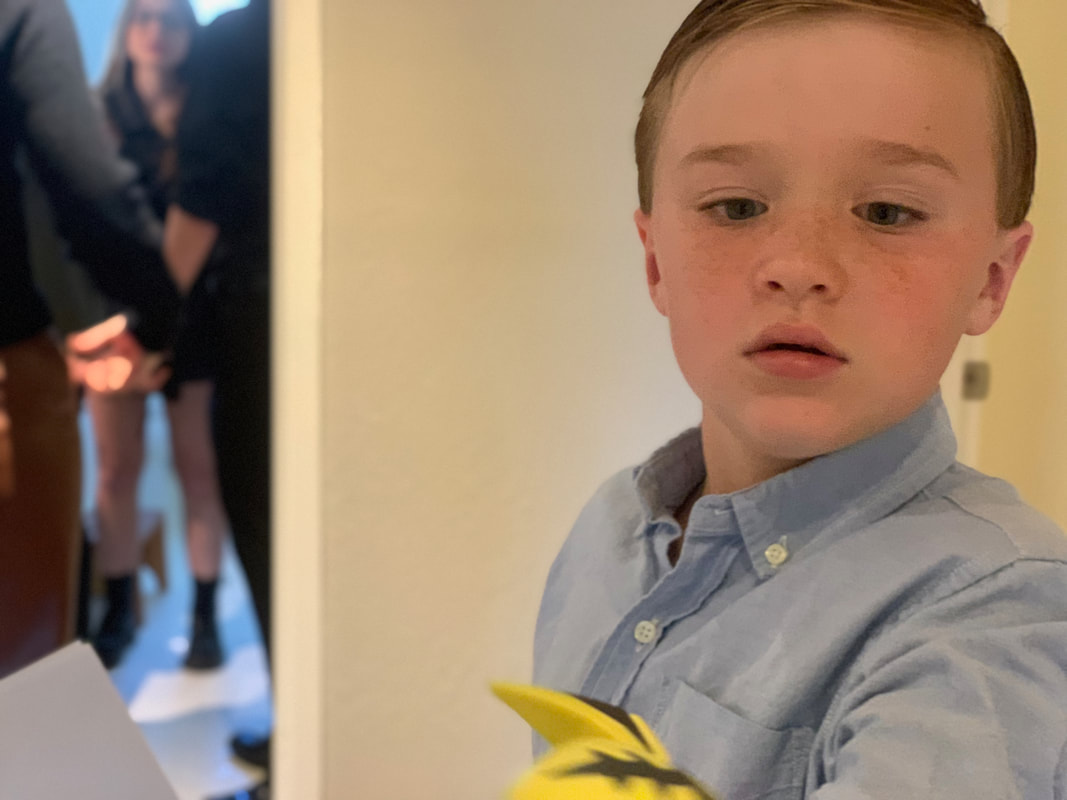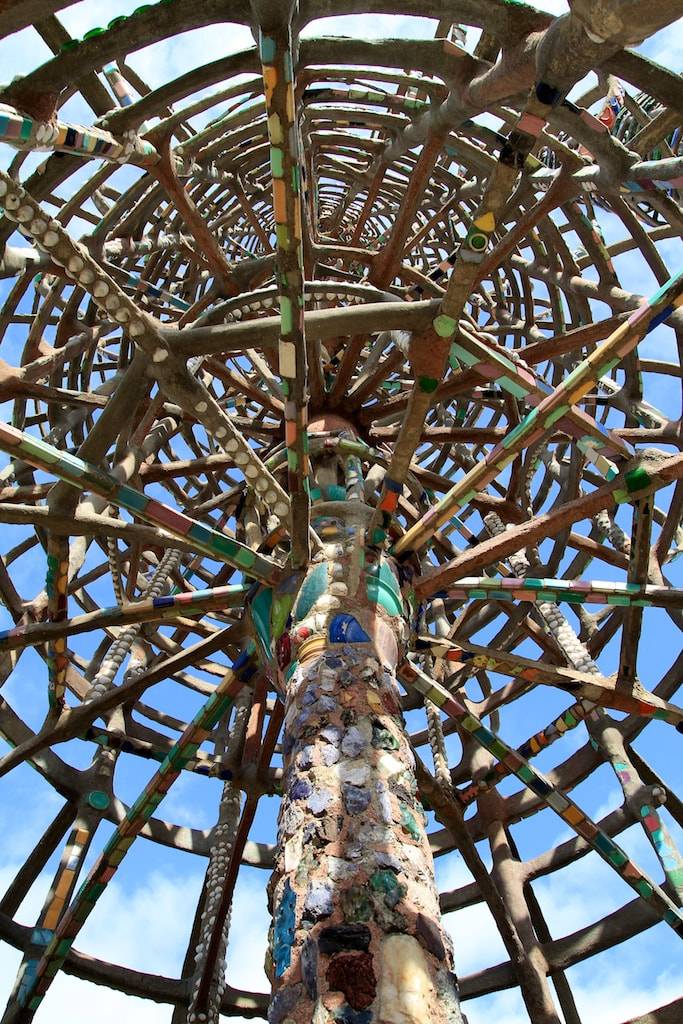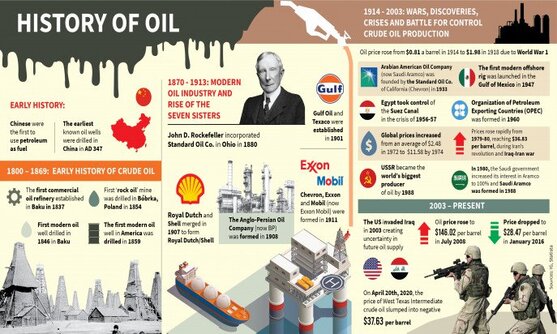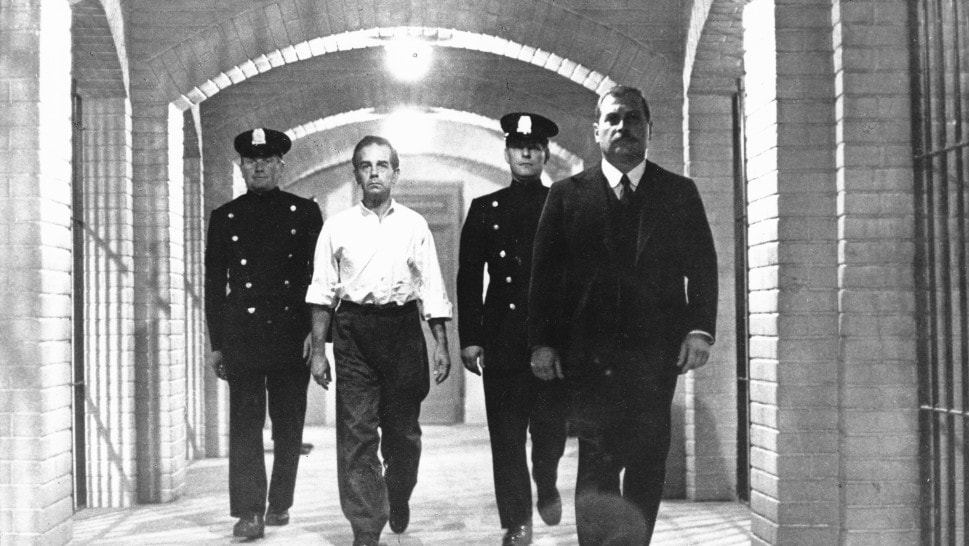When she and I first met over a video call, there was an instant connection. Because she shares herself and her faith so passionately, I felt as if we had known each other for years. That’s the kind of person she is. A beautiful soul with a heavenly spirit. Gilianny is also the founder and head pastry chef at Noah’s Sweet Treats. A small boutique bakery located in a very specific place. In her kitchen, in a house that she shares with her husband and their 12-year-old son, Noah, who by the way is whole reason why she started baking in the first place. More than just having his name on his mother’s company (and heart), Noah also has a genetic disorder called, Patau syndrome, a condition that is caused when a person has an extra chromosome 13. This has left Noah with numerous and severe disabilities. Most babies born with Trisomy 13 never make it past their first year of life. But Noah is not your average kid. He is a blessing to this young family. Statistically speaking, Noah had a five percent chance of seeing his first birthday. Now that he has hit that milestone over 12 times now, it’s safe to say not a single day of their life together has been taken for granted. As Gilianny said, “Watching my son going through transfusions, hospital visits, skin infections, and blood work almost every week was devastating...I saw Noah going through the most painful moment of his life and it was heartbreaking.” When Noah was five, he was diagnosed with Myelodysplastic syndrome, which is a disorder caused by a disruption in the production of blood cells. Because of his health, Noah needs constant care. And getting outside help is out of the question during a pandemic. Then, in the summer 2020 Noah kidneys began to shut down and the only help available was to give him daily peritoneal dialysis. Because of COVID, that would have to be done at home. While sheltering in place and caring for her son, Gilianny began to feel the weight of life and the stress that comes with it. So, she started to bake, first as a way to fight off depression. But before long, she needed to do something with all those sweet treats, so she started selling her cakes and baked goods to raise money for an outside deck for her son. And that’s how Noah’s Sweet Treats first began. Given the tight-knit community she and her husband are a part of, the response was overwhelming to say the least. “Everyone loved what I was making. So, I decided to keep baking for Noah to be able to offer him more quality of life.” And it seems to be paying off. You can tell by the pictures that each treat is a culinary masterpiece, both inside and out. Now that I have personally enjoyed one of her creations, I can see why she has so much repeat business. This past October, I went to Gainesville to stay with our mutual friend who first introduced me to Gilianny. While I was there, I not only met the chef in person, but I also got to taste her Brazilian Chocolate Coconut cake. It was seriously one of the best cakes I’ve ever tasted. In fact, I heard people say that a lot while I was there meeting folks who now only use Noah’s Sweet Treats as their go-to for cake and other delicious confections. It’s no surprise that her love for her son became her love for everyone else. You can taste it in every bite. On one hand she wants to raise money for her son’s care. But on the other hand, as she said it herself, each of her creations has “a bit of the sweetness of Brazil” added into it. Although she is proud of where she’s from, Gilianny is more grateful to have been blessed in this place where she is. “I thank God for this special gift.” Although Noah himself cannot eat these amazing cakes, he is never without her love. Which is why Noah’s Sweet Treat’s is the perfect name for her company. The name could be about the cake itself or the person who baked it. Either way, Noah is a lucky boy. Because his mother wasn’t going to let life’s challenges dictate the quality of their lives. Yes, Noah’s health will always be a what it is, I think I can say his life is improving. And so is everyone else’s. Thanks to Noah’s Sweet Treats. In a recent Instagram post Gilianny wrote, “I found a new passion that it’s making my heart full of joy. Baking is allowing me to show love and to serve others and I am extremely thankful that God gave me this opportunity.” Gilianny is busier than ever. Word is getting out there. People are flocking for her cakes, cupcakes, dochino's, cookies, and specialty cones. As of today, Noah's Sweet Treats are making their way into people’s lives. And her creative imagination continues to be the delight of birthday parties and anniversary celebrations, office parties and special celebrations. Filling bellies with sweet goodness. And filling hearts with joy.
0 Comments
In the 1966 classic film The Endless Summer, documentary filmmaker Bruce Brown follows surfers Michael Hynson and Robert August on an around-the-world surfing adventure to find the perfect wave. Since then, surfers of all calibers have made this a life goal. Many have scoured the islands of Hawaii, trekked the beaches of South Africa, Thailand, and England all in search of the perfect wave. And just like in the movie (spoiler alert) even the best scientific tracking tools can’t guarantee that those waves will be there or perform as they hope. But there was one place they didn’t look. And that was inland. You read that correctly. Not island, but inland. Like 110 miles inland from the closest beach.
(Fun Fact: I surfed with Kelly when he was a kid. Although he was six years my junior, his style caught my attention enough to paddle next to him and strike up a conversation. We'd battle it out, wave after wave, for the rest of the day. He was highly competitive then, but super easy going.) Like so many before him, Slater has been dreaming about this wave since surfing in an artificial wave pool in Texas when he was 14 years old. In 2015, that dream became a reality, when he shocked the world with an Instagram video of him ridding a perfectly crafted wave in the middle of nowhere. Now let me paint the picture for you. Nestled between Los Angeles and San Francisco is about 250 miles (north to south) of farmland. Beginning at the Pacific Ocean, this land stretches eastward for what I’d guess to be 200 miles until it hits the Sierra mountains. Roughly 2/3 of the nation’s food supply is grown on this piece of California. From strawberries and grapes to kale and broccoli, or pistachios and almonds to poultry and beef, if it’s in your refrigerator there’s a good chance it came from here. What’s not farmed is mined for oil and other natural resources. The terrain is green, and dusty, and mountainous, and rugged, and hilly, and windy. The area is so enormous that the three major highways that cut through it barely show up on satellite photos.
Per the internet, I learned the testing site is about 2,000 feet long and 500 feet wide. While the original artificial lake was built for water skiing, Slater saw its potential and turned it into a premier site for surfing man-made waves. Because of its location in the middle Central California, the Surf Ranch is able to operate year-round “and can be surfed at any time thanks to the unique supercomputers that output ocean-like waves regardless of weather and wind conditions.” At the time, the pool created barrel waves that lasted for 45 seconds. As far as the public knows, the Surf Ranch produces 15 waves per hour, meaning that any surfer who visits could expect to catch around 120 waves in a day if they hit every wave. As one of my childhood surfing idols, Gerry Lopez, describes it, “Kelly has created the quintessential perfect wave. And to be able to get that over and over again is really going to push the envelope of surfing like it’s never been pushed before.”
It’s the ultimate “build it and they will come” mentality brought to life. While the Surf Ranch is a bucket-list surf destination for any surfer, it’s only for a select group of people – those who are lucky enough to be invited, and those rich enough to ride it. On the upside, you get a single, long ride that can last up to 45 seconds without anyone cutting you off. Although that is a priceless offer, what I found online suggests even a single wave at the Surf Ranch is way out of my budget. One writer calculated, “The costs depend on the deal that you choose, though you're typically looking in the ballpark of $10,000 for the "Surf Ranch Experience." This number includes the premium tier experience and a booking fee. Every wave cost around $450 on average, according to various sources.” If I had money to burn, I’d burn it here. Surf by day, eat farm to table cuisine at night. Rumor has it, you can book the entire wave pool facility out for the day, which depending on the season, could set you back somewhere between $35,000 to $50,000. “Breaking down the cost even further, you are looking at spending anywhere from $290 to $415 per wave.” With gas prices the way they are right now, hitting the beach on a constant basis is too expensive for me. So, it’s back on the couch with my Bruce Brown collection of surf DVD’s - a gift given to me by an old and very dear friend Pat Carroll who has never surfed a day in his life but has the most beautiful long board hanging on his wall. A board that looks like it was made for an Endless Summer.
Both of these readings seem a little dark in comparison to the blinking lights of Christmas that fight to get our attention. The church begins a new year not with Yule tide cheer but with nervous anticipation. We know what is coming but all we can do is hope that it comes sooner than later. It feels like we’ve been waiting nervously for a while now. And at times, I feel like one of those ancient Israelites who were beginning to feel like maybe God had forgotten them.
It’s hard to remember there’s hope when the world seems to only be filling up with more hopelessness. But both the prophet and our Christ, tells us that hope is always on the horizon. Despite what the world is doing today, God is doing something greater for tomorrow. I’ve titled my Advent series “Between Today and Tomorrow” to keep our focus on what God is doing in this space. And what God is doing right now is giving us hope for what’s to come later. Hope is a familiar concept to most of us. By definition, it is a feeling of expectation and desire for a certain thing to happen. For example, my kids hope they get the right answer when they guess at a multiple-choice question. Or you hope that when you submit a resume to a new job, they will look at it and even call you in for an interview. And who hasn’t made a Christmas wish list and not hoped to get everything on it? Hope is applicable in nearly every aspect of life. While it’s never certain when that thing we hope for will happen, we are sure that there will be a time of waiting. Hope and waiting go hand-in-hand. We wait for the test to be graded. We wait for the company to call us back. And during Advent, we wait with hope in our hearts for Christmas morning to come. We need hope to get us through the hard times. The young prophet Jeremiah speaks to a group of people who seem to have lost all hope. He tells them something good is coming out of all their pain and suffering. God is moving. A savior is coming. Don’t give up hope. Still, there is a time of waiting for it to unfold. And this is what Jesus tells his followers to do during that time of wait. He says, “Be ready by being on guard so that your heart does not get weighed down with foolishness, drunkenness, and the worries of life.” Jesus tells us not only to wait for God to act, but to act accordingly as if it’s going to be today. Advent is a time of active waiting. A time to ready ourselves for the coming Christ. It is a time to step into Anamesa, that space between today and tomorrow, to bring hope to those who have none. It’s in this active waiting that we are called to live out our faith together. As a new variant of COVID begins to spread, I‘ll admit I’m getting tired of waiting – waiting for a cure, or for enough people to get vaccinated. I’m tired of waiting to see what is going to happen next. I want life to go back to how it was before COVID and all the havoc it has caused. In the midst of whatever chaos we are experiencing, Jesus tells us not to worry about it. He doesn’t want us to go back, but to keep moving forward in Anamesa. He’s calling us out in the world to be active in our faith, knowing God is acting faithfully too.
watch the message here
Like Jeremiah tells God’s people, whose lives have been completely turned upside, whatever is going on in life, whatever is bringing you down or causing you grief and pain, whatever people might be inflicting on you, the days are surely coming, when the promise to God’s people will be fulfilled. And so Advent is a time to hope.
If we believe in our hearts what God says is true, then we can trust in God’s greatest revelation given on that first Christmas morning. By placing our hope in Christ, we can give of ourselves faithfully, as we wait for him to come again. We can wait with joyful expectation trusting in God and being with God today, knowing our future is already secure. The hope that Advent brings frees us to travel from today into tomorrow. It frees us to love and care for each other without fear or hesitation. If we believe God’s promises are real, then we can use this time to fully participate in God’s eternal vision of peace by “executing justice and righteousness in the land.” We can live fully and faithfully today knowing God is moving with us towards a better tomorrow. You see, Advent is a gift for each of us. A gift not based on what we’ve done, but on what God has done through Christ Jesus – the incarnate goodness and mercy of God’s love given to us. Jesus is our hope. He is the promise and the proof that God has never left us in the dark or ignored our cries. But has come to be with us, in the flesh, and suffered alongside us and celebrated with us. In Christ, God has saved us, and continues to save us, until that day comes when no one needs to be rescued simply because all who have been saved by Christ choose to live Christ like doing his work alongside one another. Benjamin E. Mays is often quoted as saying, “I have only just a minute. Only 60 seconds in it. Didn’t seek it, didn’t choose it, but it’s up to me to use it. Just a tiny little minute, but eternity is in it.” As faithful followers of Christ Jesus, we are called into the space between today and tomorrow where real darkness exists, where real pain and suffering are happening in real time. It’s in this space we are called to shine the light of hope for others to see. We are given this day to live in the eternal promise of tomorrow. We can choose to use our time playing church or being the church. We can either sit idly by and wait for Jesus to act. Or we can act in his holy name – participating in life together by living our life according to his word. The very word that gives us our hope. Henri Nouwen reminds us that a, “Christian community is the place where we keep the flame of hope alive among us and take it seriously so that it can grow and become stronger in us.” Together we can live with courage in this world without surrendering to the powerful forces that constantly seduces us toward despair. Together we can proclaim the good news in the world that God is a God of love even when it looks as if hatred and division surround us. Together we offer hope to one another by living out the good news that God is a God of life even as the world gives us more death and destruction. Together we can wait with hopeful hearts, nurturing what has already begun through Christ while expecting its fulfillment as a Christ-centered community. A people who come together in his holy name, sharing our joys and sorrows together as visible as gesture of hope. So let us come together, to begin a new church year with new hearts – to live our lives in this day as if we are preparing for something greater to come tomorrow. Because God’s promise is real, proven already in Christ Jesus, we can wait and participate together through the darkest of days. We know how the story of life ends and how it begins again. Advent is a time to remember that Jesus is our hope, our joy, our love and our peace. He is light that that breaks through and overcomes the darkness of the world. And if you ask me, that alone is something worth waiting for. Work Cited Charles, Gary. Feasting on the Word: Advent Companion. Edited by David Barlett and Kimberly Bracken Long Barbara Brown Taylor. Louisville: Westminster John Knox Press, 2014. Keating, Thomas. Fruits and Gifts of the Spirit. (Lantern Books; 2007) pp. 71-73. Nouwen, Henri. You Are The Beloved. San Francisco: Convergent Books, 2017. Polter, Julie. A Whirlwind in a Fire. Sojourners. December 2018. Roberie, Joshua. Relevent Magazine. Nov 17, 2015. http://www.relevantmagazine.com/god/practical-faith/when-god-leaves-you-waiting (accessed Nov 25, 2015).
Normally, I wouldn’t give a spot on my KNOWvember to interview someone I already know. After spending the holiday weekend with him at his house, I realized I wasn’t the one who needed to know about him, the world does. On the surface he appears to be just your average little kid. But once you get past the sweet smile and freckled nose, you discover something greater lurking below. Unlike a stranger, getting Brady to talk wasn’t a problem. In fact, it’s safe to say he lives to talk. You might think that’s a typo…and what I meant to say Brady “loves” to talk (that would have been true because he does love to talk) but it’s not a typo. This kid was born to gab; therefore he is meant to talk. He’s a born entertainer. Funny, wise, observant, and witty. And he lives to talk to you as if it’s his sole purpose in life. I asked Brady the same series of questions I’ve asked everyone this year. And the only thing I had to explain to him was, “What does a series mean?” As we sat together at the breakfast table, Brady listened intently and answered from the heart. But before I reveal those answers, let me give you some basic info to help you learn about him. First of all, Brady wants you to know that he is in first grade and has no girlfriends. When I asked him about that, Brady rolled his eyes to the ceiling and with his Cheshire grin he laughed, “Girlfriends? No thanks!” Speaking of the way he smiles; Brady is also missing a few teeth and is looking forward to losing more. Apparently, he likes to pull his own. “I just started wiggling them with my finger. Then I kept wigging it with my tongue. Then I just pulled them out. No big deal.” I can’t tell you if he’s big for his age, but I know that he’s athletic, and naturally possesses a kind of fearless confidence that is the envy of all. Brady is the middle child. He has an older brother and younger sister. He is my wife’s sister’s child, who came into the world with some fairly serious medical issues. At the age of two had his first open heart surgery to repair a dysfunctional heart valve. But if you were to ask me, I’d say they did a great job because his heart is pretty good. He might be a tough kid on the outside, but inside he’s all mushy goodness. He stops to tell me that he likes a book called The Owl Dairies, which he checked out from the library. When I asked him what he likes to do with his hands, I assumed it might be schoolwork or read, or maybe something with owls or other animals because he does have two golden retrievers named Georgia and Montana. Nope. I was wrong. In his own words, “I like to draw pictures. Or paint. Sometimes I play sports.” (Fun Fact: Brady is in the process of illustrating the Bible. Although he has skipped over a few important chapters I will admit that he’s doing pretty good so far.) When I asked, “Where was the last place you walked to?” I figured with him being a kid, I would expect him to say downstairs to the kitchen or to the bathroom. Instead, he gave my query some serious thinking. “I’m pretty sure it was up a mountain.” I think he noticed my disbelief because he turned to his dad who was listening in and asked, “Dad, where’s that place mom walks? Oh, the ridge. It was exhausting. But we saw a wild turkey.” (Just so you know, they live outside of San Francisco near these beautiful foothills that lead into Sonoma Valley. I had no idea there would be wild turkeys.) Next, I asked “What do you want people to know about you after you leave a party?” His answer showed a more tender side of him. Now, before he answered me he had to let me know, “I have been to a lot of parties.” And then, without missing a beat, he continued, “I’m a really good friend.” When I asked him to explain what that meant, he added, “Usually when we play games, I like all games so I don’t care, I’ll just play whatever.” He seems to go with the flow really well. It’s hard to knock him out of this space. In all the years I have known him, I can’t recall him ever crying. I’m sure he has because Brady takes in all of life. He just does it in good stride. “So Brady. Do you have a question for me?” Shoveling another quesadilla in his mouth he said, “Nope. Just one.” Still chewing he asked, “When was the last time you were really annoyed with someone?” I could hear his dad laugh in the kitchen. I let his dad answer for me, “Last night.” (We were with our in-laws, so let’s just leave it there for now.) “Yeah,” Brady chimed in, “tell me about it.” (Fun Fact: Brady likes to use phrases he hears that he has no idea what they mean. It’s rather funny.)
“Let me ask you another question,” he said. “Would you rather drink five whole gallons of soda in one minute or have super annoying dogs that would always jump up and bite your ears all the time?” For the record, I choose A: “drink a bunch of soda.” “Now you ask me one,” he demanded. “Do you believe soup is a meal? Why or why not?” He thought for a moment while staring at his empty plate. Then with all seriousness he told me, “I’d say that’s not a meal. Because if you have a meal, well that’s a bunch of food. Soup is just one thing with a bunch of food stuff in it.” When I asked him “If you could live in another era of history, what would that time be and what would be want to be doing?” His reply was classic Brady. “That time when the cavemen roamed. They had clubs. I want a caveman club. Plus, I’d like to see a real-life dinosaur. I don’t care which type. They’re all pretty cool until they eat you.” If you could have a one-on-one dinner with someone who would it be? He rattled off a bunch of names (after all he’s part of a very big extended family). But he settled on one. “My dad’s dad. I only got to see him for like a week.” (Actually, it he had known his grandfather for three years before he passed away. But still, a mushy moment for us all.) I only had two more questions left. With most people I would try to slow things down to keep the conversation going. But with Brady, the conversation just keeps on going whether you are listening or not. I needed to know, “What does a good deed mean to you?” Shrugging his shoulders and wanting to leave the table he just said, “When you do something for the earth or someone. Showing them respect and stuff.” Then lastly, “Where is a place you have visited that you would never go back to?” No hesitation there. Picking up his plate he walks off saying, “Man, I’d never want to walk the ridge again. It’s just too high. But if there was ever an Ellaland…” (that’s the name he calls the place where Ella in the animated movie Frozen lived) “I’d never want to go there.” I know this kid. And now you do too. It might be safe to say that Brady is going places. Lots and lots of places. But for now, he has to get in my car. It’s time to go back to Nana’s house, “Just to not do anything.” Nana has the leftover turkey. Since he doesn’t want to go back up that ridge to find that wild turkey, Nana’s house was the only place we were going to get some more leftovers. And more conversations.
I love my son. You might remember he was the one who gave me the idea for Corpse Fever which you can read about on KNOWvember Day Three. Other than being someone who loves the oddities of life, my son has always been obsessed with all things Japan. In fact, he selected his high school because they teach Japanese as a language. While I have no idea what he is saying when he speaks it to me, I do know that his love has yielded many great things that we have enjoyed. The biggest being his constant quest to perfect ramen, a Japanese noodle soup. So when my boy asks, “Dad, do you want to know how to make taiyaki?” the only right answer is “When can we start.”
Fun Fact: It's traditional to serve tai fish (sea bream) on the 100th day after a baby's birth, as well as at New Year's celebrations and festivals such as the Toyohama Tai Festival, where the people in the fishing community carry a giant tai float into the sea. So as you might have guessed, Taiyaki gets its name because it’s shaped like a tai fish. It is very similar to the Japanese pancake treat, Imagawayaki, but smaller. And fish shaped. Taiyaki was first sold in Japan in 1909 when Seijirō Kobe, founder of the store Naniwaya Sōhonten, was having trouble selling his imagawayaki. Using a bit of marketing savoy, Kobe decided to bake the cakes into shapes that resembled the tai, a symbol of luck and fortune in Japan. At the time, tai was very expensive and only the very wealthy could afford them. And only on special occasions. Rumor has it that Kobe wanted to give the ordinary people a taste of the expensive fish at low prices. And he did it by stuffing sweet surprises into a cake shaped like a fish. I can hear Marie Antoinette saying, “Let them eat cake!” Since its creation, taiyaki has evolved into many variations, with different ingredients being used for filling and batter, as well as variations in shapes and sizes.
Taiyaki would eventually make its way around the world. It came ashore first in Korea, during the Japanese colonial period. You can still find it, but it’s called bugeo-ppang. Soon it made its way to other Asian countries, but it wasn’t until after WWII did it cross the Pacific Ocean and swim into our country where, if you are lucky, you can catch one or two. So, how do you make Taiyaki? As long as you can get your hands on a special taiyaki griddle with fish-shaped mold, it’s pretty simple. (Or buy mold on Amazon here)
You can find a delicious Taiyaki recipe by Chef Iso who has listed all the ingredients you need to make this savory treat for yourself. Who knows, maybe I will surprise my son. Not with a trip to Japan like he wants. But by giving him a taste of the good life from the comfort of his own home.
https://chefiso.com/p/taiyaki-recipe/ https://en.wikipedia.org/wiki/Taiyaki
Rodia came to America from Italy as a teenager in 1894. He moved to Watts in 1921 at age 42 and began creating the world’s largest single construction ever created by a single person. The Watts Towers are seventeen major sculptures “constructed of a structural steel core, wrapped in wire mesh which has been covered with mortar, and inlaid with tile, glass, shell, pottery, and rocks. Set in only a fourteen-inch foundation, the tallest of the towers is ninety-nine and a half feet tall.” If that is not impressive enough, “there is no welded inner armature. Rodia wired rebars together then wrapped this joint with wire mesh and hand packed it with mortar and his mosaic surface.” “Although he lacked formal schooling, Rodia's years as a laborer and his natural ingenuity led him to develop a unique method for building his dream structure on a limited budget and with few tools. He bent salvaged steel into the shapes he desired, wrapped wire mesh around it and covered it with thin layers of cement mortar. Since Rodia didn't have scaffolding, he laid out most of the elements he needed on the ground, carried them up in buckets along with his tools and assembled them in place. As he worked, he was anchored only by a window-washer's belt and buckle.” When the 1921 west tower was completed, it contained the longest reinforced concrete columns in the world upon “an important record in the history of architecture. The stability of the entire monument is ensured by its innovative architectural design embodying universal structural principles found in nature.” In 1959, the International Conference of Museum Curators resolved that “Rodia’s Towers are a unique combination of sculpture and architecture and the paramount work of folk art of the 20th century in the United States.” In the sculpture you will find the soul of California built into it. There’s bits and pieces of California pottery makers, as well as from well-know tile maker Batchelder and dishware from Fiesta, Harlequin and probably Bauer and Metlox. “All of these were local companies who helped shape the colorful, functional Craftsman aesthetic.”
Elina Shatkin, whose article on Discover Los Angeles I got a lot of this wonderful history from, writes, “The Watts Towers are exemplars of folk art and outsider art, terms for unclassifiable works of great originality or beauty created by the disenfranchised.” Towering towards the heaven, this integrated series of artistic vision and passion combines all the artistic elements of sculpture and architecture, but is also “an unparalleled example of an art environment constructed by a single, self-taught artist.” Once the art world recognized this great accomplishment in 1959, “the site has become the focus of cultural and aesthetic movements addressing issues of social and economic justice. To this day, the Watts Towers serve as a symbol of freedom, creativity, and initiative for the local African-American and Latino community and beyond.” Today, The Watts Towers attract over 40,000 visitors yearly from across the nation and around the world including artists, poets, musicians, architects and social and cultural historians. Some interesting folks include the great jazz musician Charles Mingus who grew up in the shadows of the towers. You can also find pictures of it on album covers by Harold Land, Don Cherry and Tyrese. In fact, Rodia himself is next to Bob Dylan on the cover of The Beatles' Sgt. Pepper's Lonely Hearts Club Band.
His inventions and the companies he has founded cover a wide range of disciplines, including computer graphics, video and audio production, scientific computing, factory automation, digital printing, liquid crystal displays (LCDs), molecular electronics, digital music synthesis, 3D printing, molecular electronics, cryptography, nano technology, microfluidics, security inks, photovoltaic solar cells, interactive paper, and that is only scratching the surface.
Starting his inventor career at Fairlight Instruments back in 1977, Silverbrook’s first invention was a real-time video effect computer that was released in 1984. That’s where it all began — he later quit the company and started founding a business after a business. One being Silverbrook Research, an R&D and invention licensing company. A few of the inventions done by his firm include the printing technology Memjet and Netpage, a software system that makes printed paper interactive. While a lot of his inventions are built around photography and printing-related industries, he has numerous patents in mechanics, optics, and even medical diagnostic devices – including a diagnostic device can detect infectious diseases from a sample of DNA, and it can be operated with a smartphone. Even though we use many of his inventions every time we take a picture on our phones, Silverbrook remains pretty much unknown to the world. It’s not because he is shy or has a poor public relations team. Like most inventors, they are done for other companies. For example, over 250 of his photo-related patents – like facial recognition on phone cameras – were acquired by Google, Facebook, and Apple. So I guess we know what Kia Silverbrook like to do with his hands. He invents stuff. I can kind of assume when he leaves a party (especially one with a bunch of inventors in attendance) what people are saying about is probably heavily slanted with envy and jealousy. And I like to think that if he were to go back in time, to visit any era, it would be back in the late 15th Century when Leonardo Da Vinci was sketching out ideas on flying machines. I like to think Silverbrook would show him thing or two on how to make that become a reality. While I couldn’t tell you the last place he walked, I’d wager a guess that it was up in the clouds. For a person like Kia Silverbrook, not even the sky is the limit to making one’s imagination come to life. But more importantly, and this is a lesson for us all, his inventions not done merely because he had an idea but because he had a vision for the world and all of us who live in it. We are the benefactors of his creative intelligence. Imagine what our would could achieve if we used our minds for building back a better humanity. http://kalamfanclub.com/kia-silverbrook-the-man-with-9700-patents-and-inventions-under-his-name/ https://en.wikipedia.org/wiki/Kia_Silverbrook https://medium.com/@ILMM_Magazine/kia-silverbrook-the-world-s-most-prolific-inventor-501c38abf572 It’s KNOWvember and its 82 degrees as I write this post. It should be cooler, but it’s not. The weather, as most scientist have been saying my entire life, is changing. I say that because instead of calling it Global Warming to get people’s attention, some politicians decided it might sell better if we call the alarming shifts as nothing more than Climate Change. This shouldn’t come as a huge surprise to anyone, but the biggest culprit on the planet is the human being. From the cars we drive, the electricity we consume and the food we eat, the natural resources we are depleting from the ground are affecting the air above. Thus, one might argue the second biggest culprit destroying our planet is the oil we extract from it.
Of course there are other kinds of oils out there as well. I cook with olive oil, sunflower oil, canola oil, peanut oil and occasionally vegetable oil. There is also torch oil, teak oil, lemon oil, and so on. It’s like if you can grow it, build it, or chop it down, it can be turned into an oil. Except babies. Although the name is confusing, Baby Oil in fact is not made from babies (apparently, neither is baby powder). All these oils are more helpful than harmful. But not all plant based oils can say that. Palm oil, which over the last few decades has enjoyed some worldwide fame as it quietly works its way into our daily lives. You might know about palm oil, but did you know the devastation it has had on communities and ecosystems around the world? “Iconic animals such as the orangutan now teeter on the brink of extinction; fires lit to clear the way for plantations spew carbon emissions to rival those of industrialized nations.”
Then there is corn oil, which you probably know is use is in cooking because it has a high smoke point; making it an ideal and cost-effective way to fry foods. But it is also used for making biodiesels, as well as soap, salves, paint, erasers, rustproofing, inks, textiles, insecticides, and nitroglycerin. It is sometimes used as a carrier for drug molecules in preparing pharmaceuticals. It’s also found in cosmetic powders, candles, dyes, lubricants, insulation, and yes, wallpaper. No wonder some fact checker at Reuters remarked, “Corn is sometimes referred to as "yellow gold" because it is used to make so many products and byproducts that end up throughout the economy from food store shelves to gas pumps to industrial chemical plants.” Here are a few facts that are worth noting about corn oil:
The United States produces 40 percent of the world's corn supplies and accounts for more than half of world corn exports. About 85 percent of the 2010 U.S. corn crop of 13 billion bushels at 56 lbs per bushel will be used for food, animal feed and a myriad of industrial product uses. Corn Oil is used int the fermentation products and byproducts -- industrial alcohols, fuel ethanol, recyclable plastics, industrial enzymes, fuel octane enhancers, fuel oxygenates and solvents. https://thenewpress.com/blog/15-palm-oil-products-you-probably-have-your-home https://www.kcet.org/shows/earth-focus/10-everyday-products-derived-from-petroleum https://mobile.reuters.com/article/amp/idUSTRE68S4Y220100929 https://en.wikipedia.org/wiki/Corn_oil My friend Joe Bui and his wife left Los Angeles to live a small, but super vibey town called Ojai. If you know anything about this place, it’s probably the fact that The Bionic Woman character, Jamie Summers, was a schoolteacher there. That is before her crash that got her “rebuilt” by the government. But I digress. Little did Joe and Nikki know that when they moved up there, they, like my wife and I, would adopted a tortoise as a pet. And I would bet my Bionic Man action figure, that they are now regretting that decision. Don’t get me wrong. I love Ed, our African Sulcata Tortoise. I’m sure they love theirs as well. But what will happen to either one of our prehistoric pets when we move on from this land will become a real issue when our children’s children pass away? It’s not uncommon knowledge that tortoises live a long time. Like a really, really long time. Given the right elements and care, they can live up to well let’s just say no one has lived long enough to really know. I heard there’s a tortoise who is older than the Eiffel Tower. He is somewhere back East and apparently witnessed the Civil War. So, when I bemoan about what my heirs are going to do with Ed, it’s a legit concern.
Up until recently, the Ojai operation only allowed visitors by special invitation. And that was mostly for researchers and educators. Today, you can get a very expensive ticket and feed a tortoise some carrots. Between the high price of admission and COVID restrictions, I didn’t take the 90 minute drive up Highway 101 to Ojai to visit the Turtle Conservancy Conservation Center. Thankfully I found some good stuff online. Surrounded by the Topatopa Mountains to the north and Sulphur Mountain to the south, the property is owned and operated by filmmaker, entrepreneur, conservationist, and herpetophile Eric Goode. On a 5-acre oasis, the conservancy is home to 900 turtles and tortoises from 32 species. Considered one of the premiere facility for breeding critically endangered turtles and tortoises in the world, “The Turtle Conservancy was the first organization to ever send critically-endangered captive-bred turtles back to their native range country.”
At the Turtle Conservancy Conservation Center, you will find a whole other world full of birds, lizards, various flora and fauna, as well as greenhouses scattered along the property. The “staff has taken great care to mimic different biomes by equipping multiple greenhouses with varies temperatures, humidities, biota and landscapes.” As it turns out, different turtles and tortoises each have very specific environments in which they will thrive. Vegetation, humidity and temperature all play a crucial role in their survival. “One greenhouse mimics the cloud forests at the top of the Thai mountains, another parodies the lowlands of Southeast Asia. Yet another simulates the arid climates in Namibia and South Africa.” The goal of the Turtle Conservancy is, of course, to breed these critically endangered creatures which many of its residents are on the International Union for Conservation of Nature’s Tortoise and Freshwater Turtle Specialist Group’s “Top 40 Most Endangered” list. Across the globe, turtles are depicted as easygoing, patient, and wise creatures. “Due to their long lifespan, they are an emblem of longevity and stability in many cultures around the world.” “Their magnificence, though, makes them a coveted human target. Turtle and tortoise populations face a threefold threat of extinction: the pet trade, opportunistic consumption and traditional folk medicinal practices. Some species of tortoise sell for up to 200 thousand dollars on the Black Market.”
My old, old friend Jim Lay gave me this suggestion for a person I needed to KNOW. What I loved about it is that it’s not one person, but two. They come as a pair. Or at least that’s how they died. And because they are dead, I will never know the answer to the questions that I like to ask people when I meet them. I have found them to be good ice breakers to get the conversation going. Since they are my own made up questions (with the help of my friend Darlene), historical records will not show if these two people prefer creamy over crunchy peanut butter. And I will never know if they consider soup as a meal. I suspect, if they could live in another era, their answers would probably be something like, “I’d just be happy to be alive.” And as long as I am putting words in their mouths, it’s probably safe to say the one place they have visited that either one would never go back to would have to be the electric chair. Because that’s how people will remember them (after they leave a party...if they we alive and had the chance to do so.) What I have briefly learned about Nicola Sacco and Bartolomeo Vanzetti is this. They were both from Italy. They both were self-professed anarchists. And they were both accused of murdering two others during an armed robbery. Many have claimed it was the first two things that got the pair accused of the third thing, which lead to the two of them being executed, despite declaring their innocence throughout their controversial trial. This is their story. On April 15, 1920, two armed men killed two employees at the Slater-Morrill Shoe Company factory in Braintree, Massachusetts. The killers were robbing the company’s payroll delivery. One of the victims was a security guard named Alessandro Berardelli. He was shot four times as he was said to be reaching for his service revolver (which was never recovered from the scene) at the time of his death. The other man, Frederick Parmenter, was the paymaster who was shot once in the chest and then a second time in the back as he attempted to flee. The robbers got away with more than $15,000 As witnesses nearby would testify, two men were seen jumping into a dark blue Buick (police identified as stolen). Inside the car were several other men who fired wildly at other company workers nearby. Not one person identified either Sacco or Vanzetti as the shooters or robbers. That lack of witness or evidence didn’t seem to bother the police. They were hungry to close an investigation from a similar type of robbery at another shoe factory that occurred four months earlier on Christmas Eve, in Bridgewater, Massachusetts. Witnesses in that crime identified the suspects as Italians. Police speculated that Italian anarchists perpetrated the robberies to finance their activities. And that’s where Sacco and Vanzetti come in. “After going to a garage to claim a car that police said was connected with the crime, Sacco and Vanzetti were arrested and charged with the crime. Although both men carried guns and made false statements upon their arrest, neither had a previous criminal record.” There’s a lot about this story and their conviction that remains unresolved. But since they were tried, convicted and then electrocuted for the crime, Sacco and Vanzetti cannot answer my silly questions (or answer any follow up questions the police might have had). What historical records tell me (so I don’t have to make it up), is I know what they like to do with their hands. Sacco was a shoemaker and a night watchman, who migrated to the United States at the age of seventeen. Vanzetti was a fishmonger. It is also public knowledge that they both left Italy for the US in 1908. However they did not meet until 1917. It was reported that “Both men were believed to be followers of Luigi Galleani, an Italian anarchist who advocated revolutionary violence, including bombing and assassination.” The Constitutional Rights Foundation provides this reminder of what was going on in our country back then that could have led to the arrest of Sacco and Vanzetti. “World War I created tremendous political turmoil. Many leftist groups in Europe and in America opposed the war. They saw it as an imperialist struggle for power and profit, fought at the expense of the working class.” In other words, Sacco and Vanzetti were not highly regarded in society or by the authorities because they supported Galleani’s reviled anarchist vision. When America entered the war in April 1917, President Woodrow Wilson said in his Flag Day address, "Woe to the man or group of men that seeks to stand in our way in this day of high resolution." And the very next day, he signed the Espionage Act, “which set a fine of $10,000 and a prison term of up to 20 years for anyone who aided the enemy or encouraged disloyalty in the armed forces.” This would set Congress in motion to amend and pass the Sedition Act, which imposed the same penalties on anyone who uttered, printed, wrote, or published "disloyal, profane, scurrilous or abusive language" against the government or the Constitution.” (ME: I guess that meant something more back then than it does today.) It should be of no surprise to anyone that the press quickly jumped on board and began to whip up the “Red Scar.” Talking heads and opinion makers stoked the fires of fear among the citizens who were told to report anyone they suspected of sedition. As one paper in Quincy, Massachusetts wrote, "Organized efforts are being started to fight the Bolshevik poison. It is none too soon." Needless to say, it was a bad time for foreigners and anarchists. And a really hostile time if you were both.
To this day, many people believe that these two men wrongfully executed. As some have argued, “their death was a result of anti-immigrant and anti-anarchist bias that heavily influenced the verdict.” A series of appeals followed. They were based on recanted testimony, conflicting ballistics evidence, a prejudicial pretrial statement by the jury foreman, and the confession to the robbery and murder by Celestino Madeiros, who said he pulled off the job with the Joe Morelli gang. But the state Supreme Court refused to overturn the verdict. By 1926, the case had drawn worldwide attention. As details of the trial and the men's suspected innocence became known, Sacco and Vanzetti became the center of one of the largest causes célèbres in modern history up until the last couple of years. In 1927, protests on their behalf were held in every major city in North America and around the world. Many celebrated writers and academics, like Harvard law professor and future Supreme Court justice Felix Frankfurter, argued their innocence and plead for a pardon. But the government wasn’t going to budge. Massachusetts Governor Alvan T. Fuller denied the men clemency. On August 23, 1927, the last place these two men would walk, would be down the dark corridors of the Charlestown State Prison where they would be executed in the electric chair at just a little after midnight.
|
Ian MacdonaldAn ex-copywriter turned punk rock pastor and peacemaker who dedicates his life to making the world a better place for all humanity. "that they all might be one" ~John 17:21“Prius vita quam doctrina.”
~ St. Thomas Aquinas (1225–1274) * “Life is more important than doctrine.”
Archives
June 2024
|










